The Primer of Claude of France
Few manuscripts designed for medieval children have been preserved. Made for a young princess, this deluxe ABC is a rare exception.
The manuscript was commissioned c. 1505 by the French queen, Anne of Brittany (1477-1514), for her five-year-old daughter Claude (1499-1524). Its fourteen pages contain the alphabet and standard Christian prayers set within a rich pictorial narrative. Intended both to educate and entertain her, the slim picture book tells the story of salvation, from the Creation of the World to the Day of Judgement.
Learn more about the manuscript by exploring the sections below or selecting folios on the right. Discover further details by choosing any of the folios with the hotspot symbol ![]() .
.
The loose brushwork and relatively pale palette, as well as the gold architectural frames are characteristic of the Master of Antoine de Roche who takes his name from a Missal he painted for the Grand Prior of Cluny c. 1500 (Paris, BnF, MS lat. 881).
The manuscript was commissioned by Anne of Brittany (1477-1514) c. 1505 probably in Romorantin in the Loire Valley where the royal court was at that time. She had the book made for Claude (1499-1524), her eldest daughter by Louis XII. Richard, VII Viscount Fitzwilliam of Merrion (1745-1816), acquired the manuscript in 1808 and bequeathed it to the Fitzwilliam Museum in 1816.
This didactic picture book opens with the alphabet, followed by the Pater Noster (Our Father), Ave Maria (Hail Mary) and the Apostle’s Creed – two universal prayers and a profession of faith that all Christians were commanded to learn by decree of the Fourth Lateran Council of 1215. The remaining texts consist of graces to be said at mealtimes, standard prayers and Mass devotions, central components of any highborn child’s education. The texts occupy a narrow column within the picture book, with the page layout dominated by a profusion of small scenes set within architectural frames. Intended to pique the child’s interest and hold her attention, thirty-six miniatures, three per page, tell the story of mankind’s Creation, Fall and Redemption. Some scenes were based on biblical narratives, while others were inspired by Arnoul Gréban’s Mystère de la Passion, a religious play performed in Paris in the late 15th and early 16th centuries.
The palette of the Master of Antoine de Roche is characterised by an exceptionally wide range of pigments and an even more bewildering use of extremely complex mixtures to obtain numerous hues of the same colour. Lead white, vermilion red, lead-tin yellow, azurite blue as well as organic pink and purple were used extensively, as was shell gold which appears in many draperies and in the architectural frames present on each page. An incredible array of mixtures yielded a range of green hues. A very unusual pigment, called ‘artificial orpiment’, was used in some orange and dull yellow areas. Interestingly, natural orpiment, a favourite pigment of many illuminators, was used extensively by the artist in green mixtures, but not as a yellow pigment on its own.
Most images have extensive underdrawings, sometimes visible through thin or semi-transparent paint layers, but best seen in the near-infrared images. Several changes made by the artist to the original compositions (pentimenti) can also be identified.
Colours, often toned down with white, are blended to create soft effects. Pale colours used for the sky and features of the landscape (e.g. bluish-green hills) create an impression of receding space and cause the figures in the foreground to stand out. Some areas, particularly backgrounds, appear to be composed of thin washes of paint, rapidly applied.
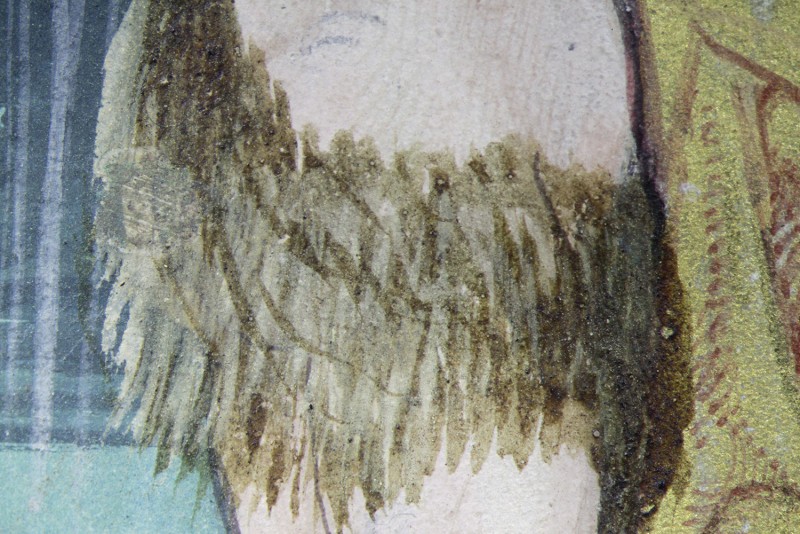
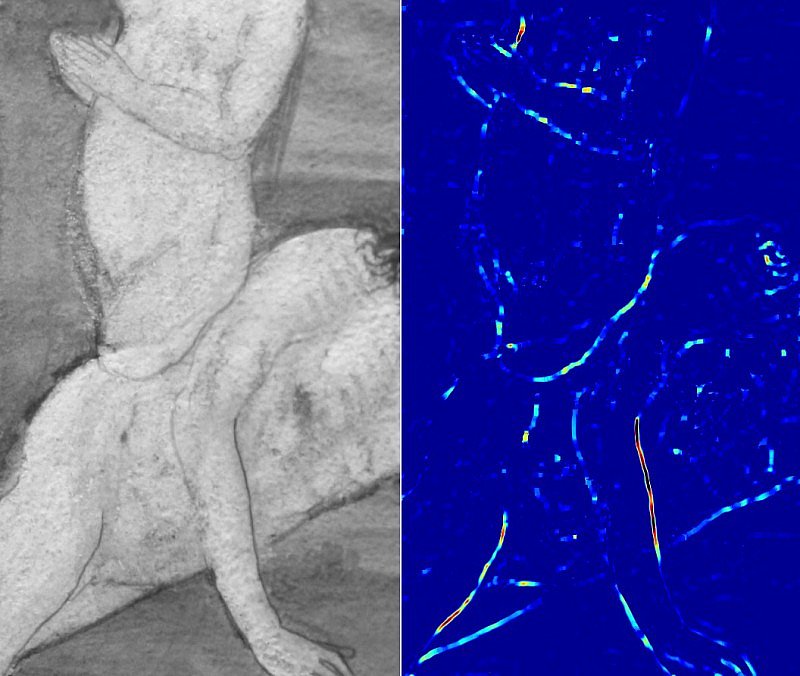
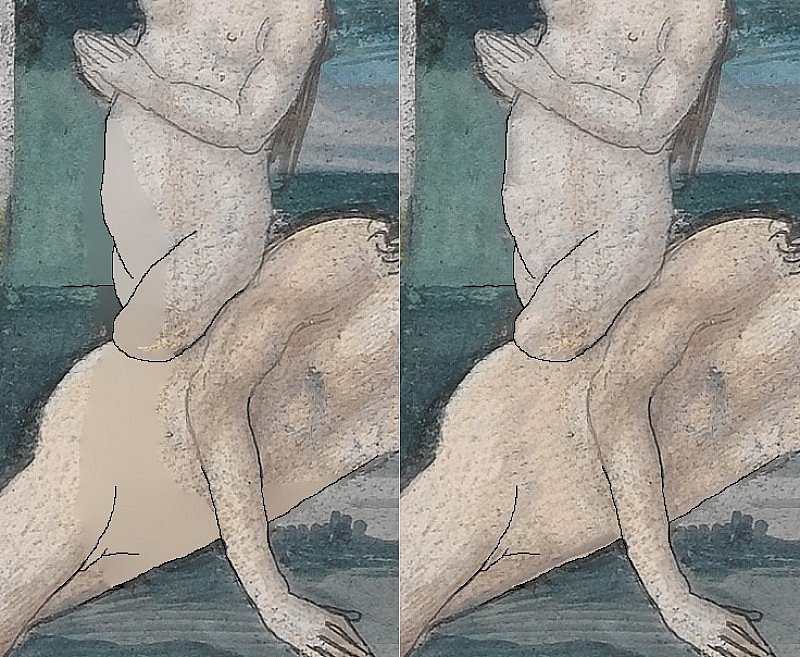
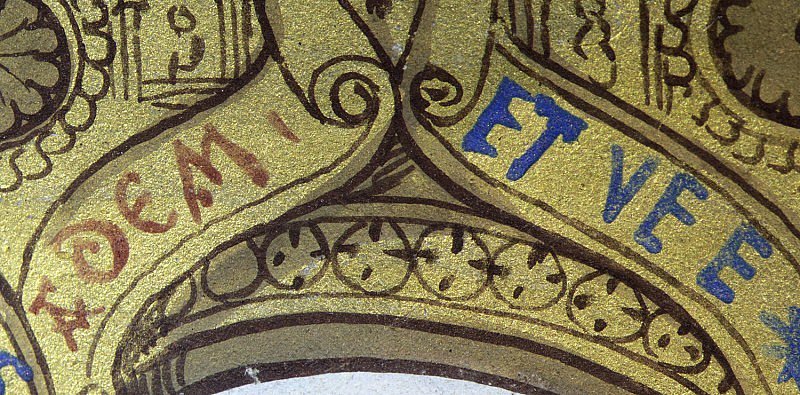
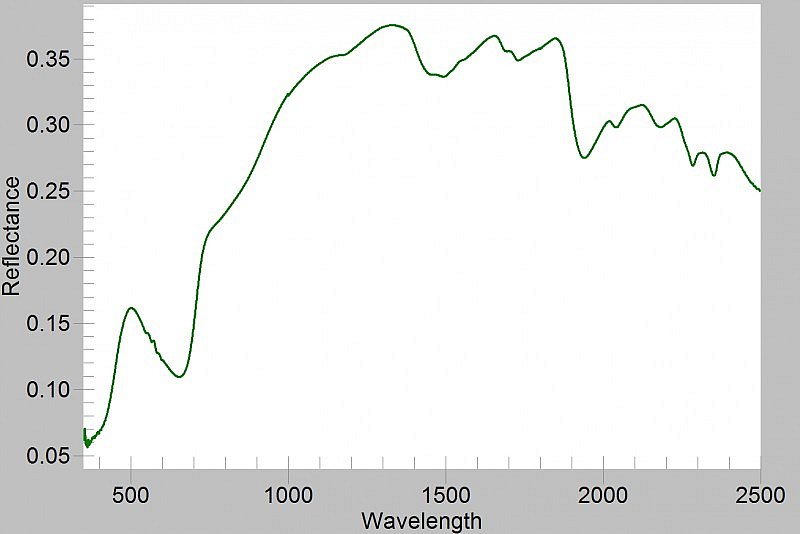
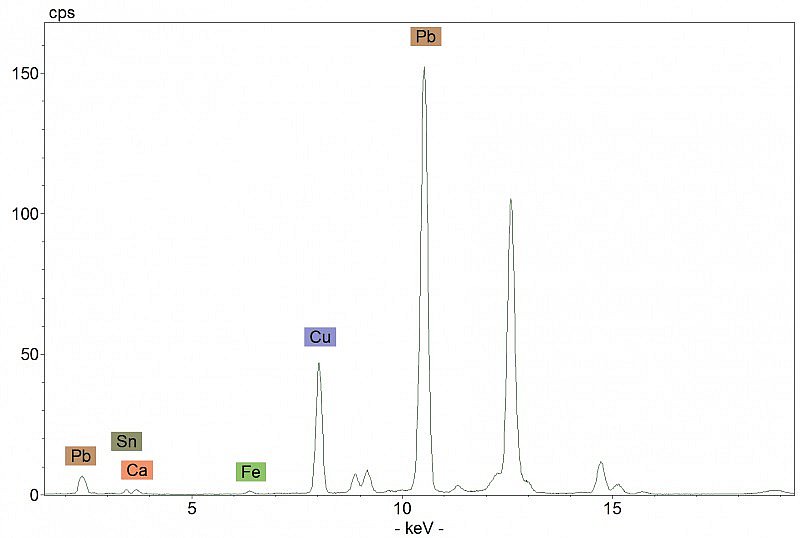
God creating sun, moon and stars; God creating Adam and Eve; God instructing Adam and Eve
At the request of a post-medieval owner who was offended by their nudity, the images of Adam and Eve on this page were overpainted to conceal the couple’s nakedness; Eve acquired a veil and Adam a skirt (hotspot 1). Using virtual ‘image restoration’ based on Partial Differential Equations (PDEs), it has been possible to create mathematical reconstructions of the scenes and to digitally ‘restore’ the figures to their original state (hotspot 2 and ‘Virtual restoration’ layer).
This is one of the pages where the artist used the unusual pigment known as ‘artificial orpiment’, mixed with lead-tin yellow in feathers of the bird in the upper border.
